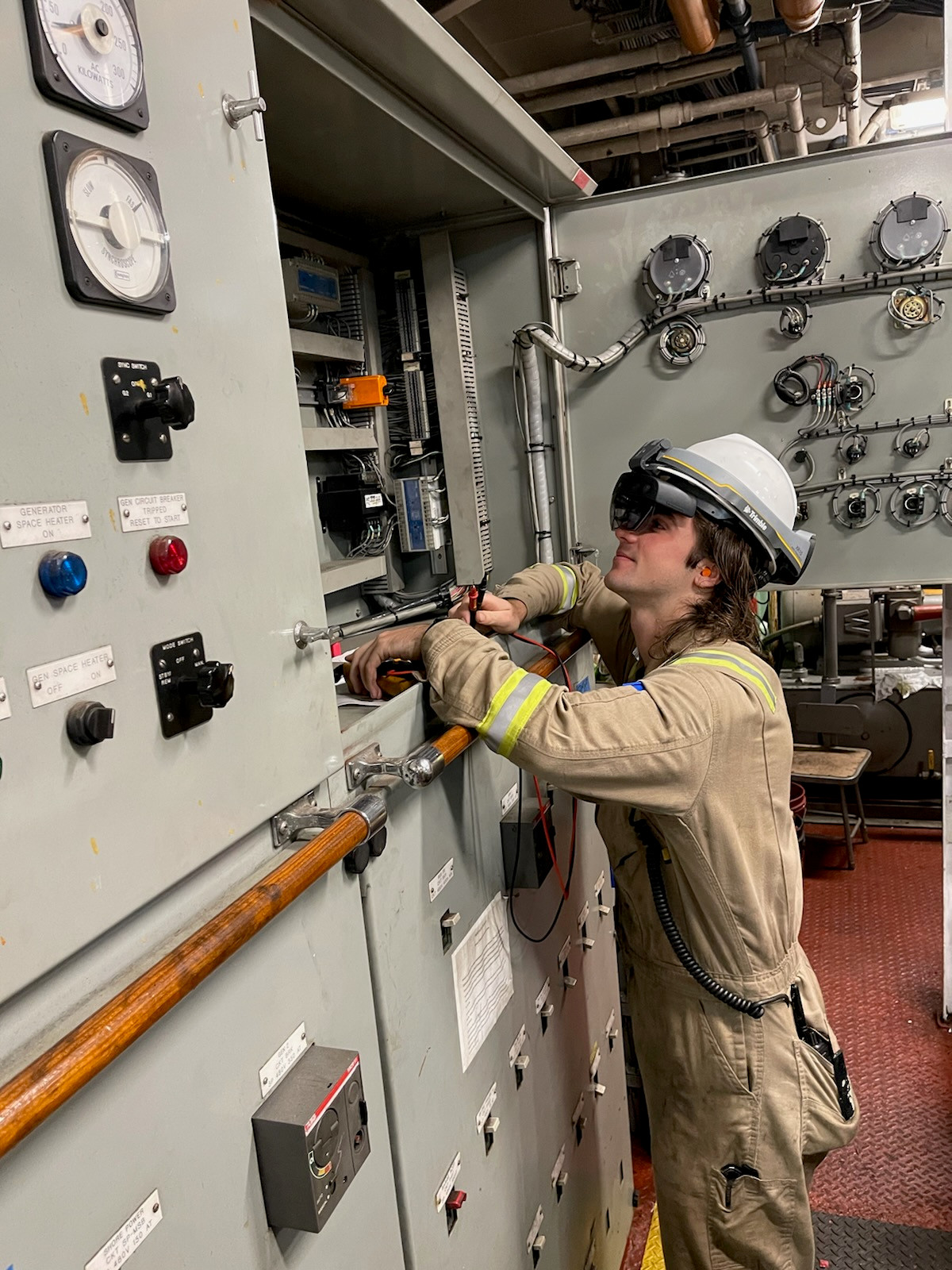Implementing high-speed internet connectivity at sea represents a significant leap forward in the maritime industry, where every minute counts and efficiency is paramount. With the installation of Starlink on more than 90 commercial, U.S. government and international Crowley-operated vessels, the days of limited communication and data transfer are over.
Starlink, SpaceX’s satellite internet service and Crowley are redefining the boundaries of innovation, efficiency and connectivity at sea. It’s critically important for our people to contribute to our business goals while staying connected with loved ones.
The implementation of Starlink also showed the impact of the information technology team at Crowley, whose group managed the execution of a technology system installation that few maritime companies had achieved.
Chief Information Officer Erika Graziuso of Crowley sees the integration of this technology across the fleet as the dawn of the next era of maritime industry technology.

Chief Information Officer
“Most importantly, the increased connectivity is improving the lives of our mariners, who spend their time aboard our ships in rotations that can last months. But this is also a business innovation that enables greater connectivity and digitalization to improve efficiency for our customers and partners. Crowley Technology’s team members are helping our vessel operations to leverage high-speed data to enhance operational capabilities,” Graziuso said.
Implementing a project of this scale and impact has been a pivotal part of our Technology professionals’ performance journey. Career-wise, Crowley team members have leveraged their technical and collaboration skills to deliver bigger real-world results in the maritime industry and their careers. They took advantage of technology to make an impact using their expertise to deliver innovation through new tech-driven solutions. They also fostered problem-solving and innovation and obtained project management experience by leveraging technology to improve operational efficiency.

Information Technology, Vice President
“The gains from integrating such technology into Crowley’s fleet are many. As a collective, we’re reinforcing our competitive edge and forward-thinking in the industry. Individually, our tech teams are upscaling their leadership know-how of complex technological environments by thinking differently about how technology enables us,” Paul Schuster, an information technology vice president who led the teams implementing Starlink, said, “This experience has provided our team with unique challenges and opportunities to innovate and empowered our people to perform at their best.”
Mariners Leverage Technology to Elevate the Industry
High-speed internet allows mariners and shoreside teams to engage and successfully fulfill their roles in maintaining the global supply chain. Real-time data exchange allows for better route planning, weather tracking and predictive maintenance. It enables the integration of devices that can monitor everything from engine performance to cargo conditions, empowering mariners to make smarter decisions on the go.

According to Graziuso, these technologies have been instrumental in continuing to elevate Crowley’s digitization strategy and innovation. Whether monitoring vessel performance metrics or coordinating with port and maritime authorities, having instant access to up-to-date information and communications means that mariners are equipped to implement immediate responses and, in turn, enhance safety protocols.
Embracing high-speed internet aboard ships is also key to unlocking the potential of emerging technologies like the Internet of Things (IoT) and big data analytics for business growth. By connecting onboard sensors, machinery and equipment to the internet, teams at sea can gather vast amounts of data on everything from engine performance to environmental conditions. They can even use augmented reality technology to carry out work onboard while connected to shoreside teams more efficiently.
With high-speed internet facilitating the seamless transfer of data between ships and shore-based systems, mariners can leverage the power of IoT and big data to drive efficiency and reduce a vessel’s environmental footprint. In this way, their work supports sustainability efforts by allowing ships to optimize fuel consumption, reduce emissions and participate in global environmental monitoring initiatives.
Technology and High-Speed Internet Aids Well-being
At the core of this technological leap is the human element. High-speed internet empowers mariners, enhancing their well-being and professional development. It also fosters a culture of innovation, where ideas can be shared and implemented quickly, regardless of location.
Graziuso shared that high-speed internet access allows Crowley to start viewing their vessels differently as a whole. “We’re viewing our vessels as more of a floating office rather than a disconnected remote office,” said Graziuso. “We’re rethinking our approach for how vessels can take advantage of the advancing technologies to further integrate our mariners into the larger Crowley employee network and culture. Meanwhile, our in-house Technology group has reached a milestone regarding its capabilities and impact on the industry.”

Crowley offers rewarding maritime careers for college graduates and others looking to join a company that prioritizes safety and innovation while providing competitive wages, opportunities to advance and the choice to join a hard-working team building a sustainable future. Learn more about maritime jobs, including becoming a port engineer.
OTHER STORIES THAT MAY INTEREST YOU:


